Koh Tao Marine Life
Koh Tao’s marine life is diverse, colourful, and full of wonder! From the smallest critters to the biggest fish in the sea. You can see it all here in the waters surrounding our beautiful tropical island!
What makes Koh Tao’s marine life so dense and varied? it is the healthy and vibrant coral reef structures that surround the island. Coral reefs comprise only 0.5% of the world’s oceans. Yet they are home to over 25% of all the world’s marine life! So it is the corals that provide the base habitat on which Koh Tao’s marine life thrives. They provide food and shelter for a wide variety of reef dwellers. Even fish species that normally inhabit deeper parts of the ocean use coral reefs as a safe place to spawn and raise their young.
Coral
When we go snorkeling or for fun diving trips, we are generally preoccupied with looking for fish. It’s worth noting that none of the colourful tropical species we see would be there for us to enjoy if it were not for the corals that support the Koh Tao marine life ecosystem.
The corals you’ll see around Koh Tao come in two forms: hard corals and soft corals. Hard corals include species like boulder coral, brain coral, staghorn coral, table coral, and leaf coral. Softer varieties comprise whip coral, fan coral, bubble coral, carnation coral, sun coral, and cup coral. In and around all of the coral structures, marine life on Koh Tao thrives.
You can learn more about coral conservation here.
Fish
The rich array of beautiful fish is the biggest drawcard for divers looking to explore the amazing world beneath the surface of Koh Tao. Species of every shape, size, and colour cruise the reefs and open ocean providing plenty to see. There are several hundred types of fish that reside in the waters here. We won’t list them all, but the following are some of the most popular and regularly spotted Koh Tao marine life species:
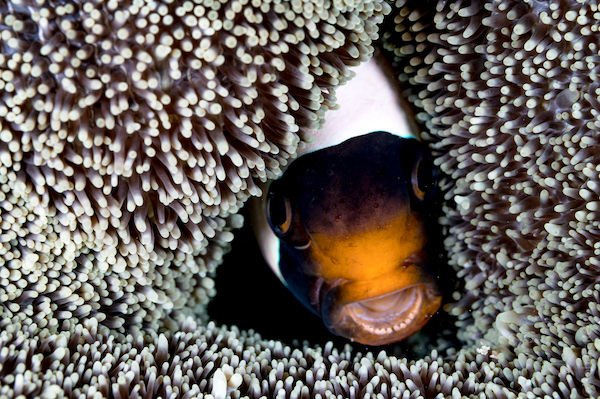
Anemonefish
There are hundreds of varieties of anemonefish, but on Koh Tao, we have mostly pink anemonefish and a few families of saddleback anemonefish.
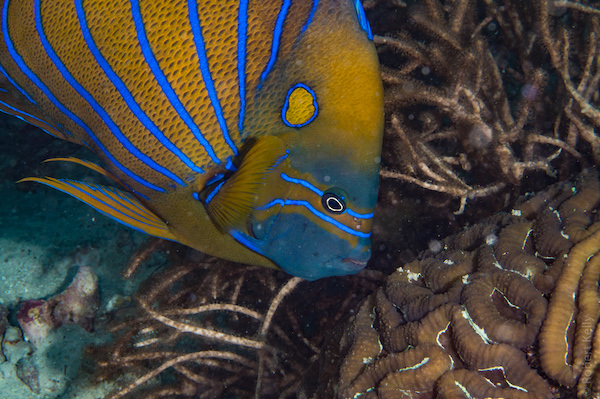
Angelfish
Big, bold, and beautiful! The most common type we see here is the blue-ringed angelfish, but sometimes you can see six-banded angelfish too.
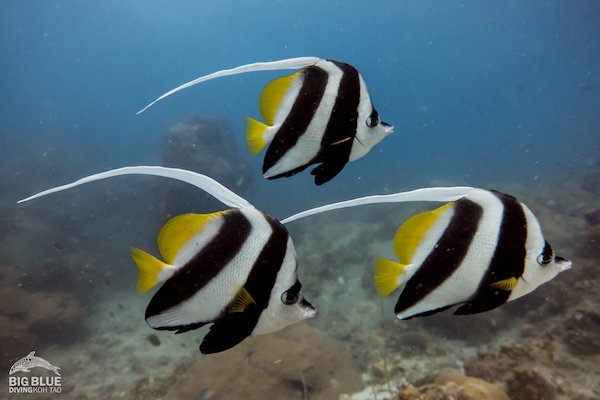
Bannerfish
Almost triangular in shape, bannerfish have black and white stripes with yellow tails and pectoral fins. They have a long white dorsal fin that trails behind them as they swim.
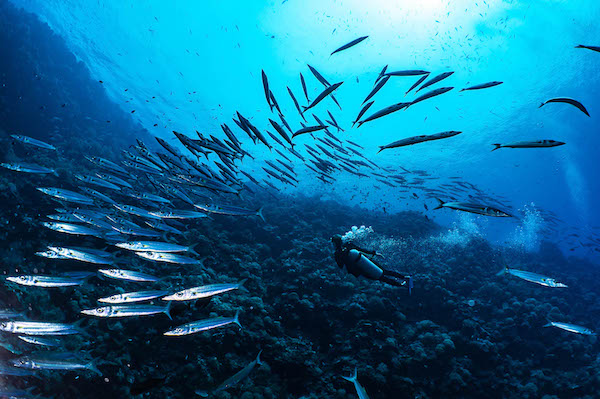
Barracuda
We see several types of barracuda here on Koh Tao. Schools of yellowtail barracuda hang out at shallower sites. Chevron barracuda, great barracuda, and pickhandle barracuda can be seen in deeper waters.
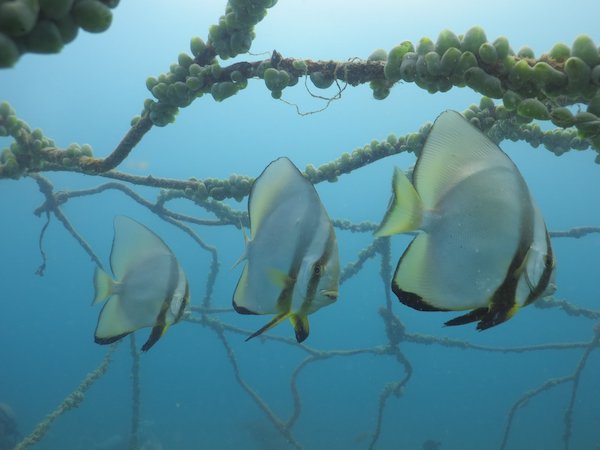
Batfish
Batfish can sometimes be seen singularly or in pairs, but these large grey and white fish with yellow fins are more often spotted schooling at deeper sites like Chumphon Pinnacle and Sail Rock.

Boxfish
The adorable yellow boxfish with its unique black polka-dot pattern is the most common of this species you’ll see on Koh Tao. There are more varieties though, Junkyard artificial reef being a particularly good place to spot some.
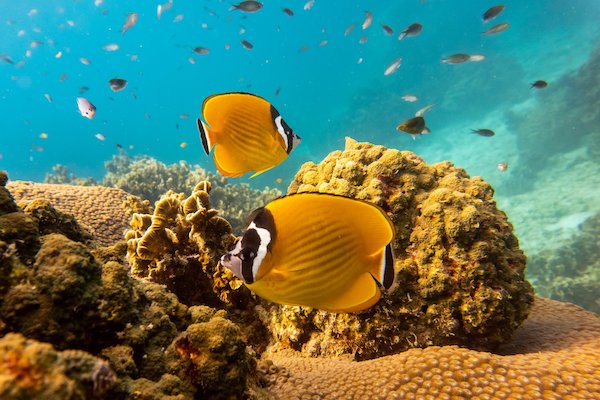
Butterflyfish
One of the most common Koh Tao marine life sightings, these beautiful yellow fish are usually seen in pairs, but they are known to school at a few select dive sites.
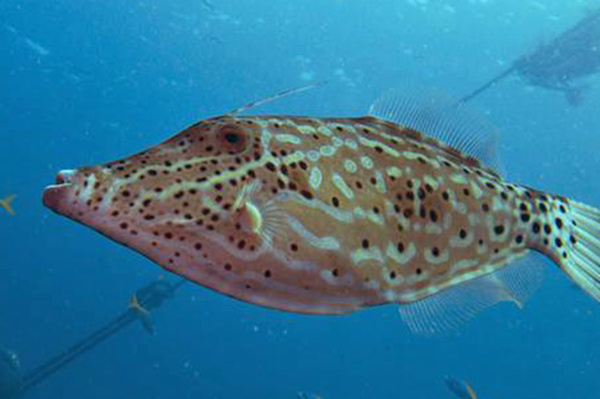
Filefish
The scribbled filefish is the most common filefish genus you’ll see around Koh Tao. If you visit sandy or artificial dive sites, you may see some strapweed filefish too.
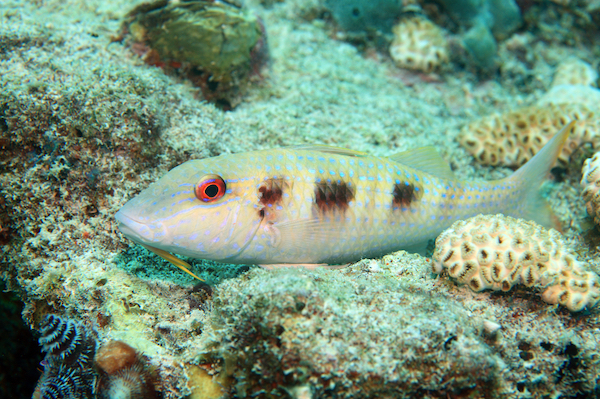
Goatfish
These sand dwellers are often seen around the shallow, sandy dive sites. They forage for morsels in the sand with their ‘whiskers’.
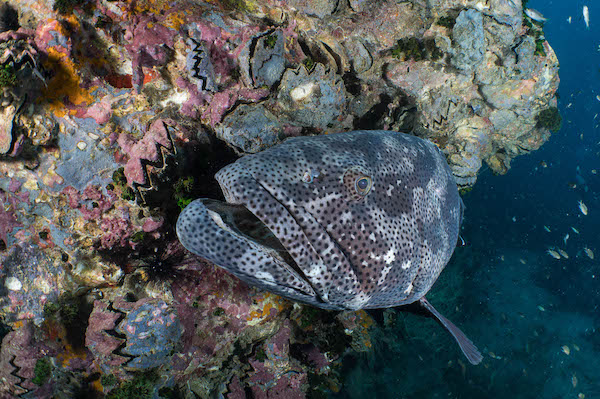
Groupers
Groupers come in all shapes, sizes, and colours here. Blacktip groupers, blue-lined groupers, hexagon groupers, and giant groupers – we have them all on Koh Tao!
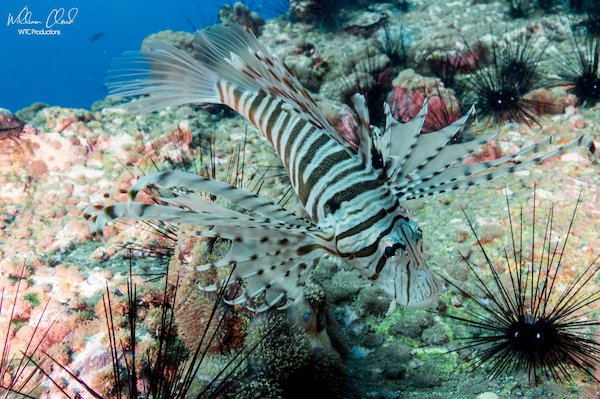
Lionfish
Lionfish sightings are rare, but these deceptively spiny fish with beautiful fanning fins are always a highlight when divers bump into them.
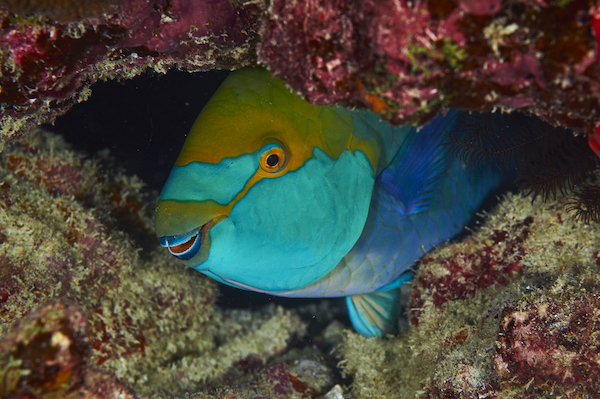
Parrotfish
Often dubbed ‘rainbowfish’ because of their vibrant blue, pink, and yellow colouring, parrotfish can be found at most dive sites around the island.
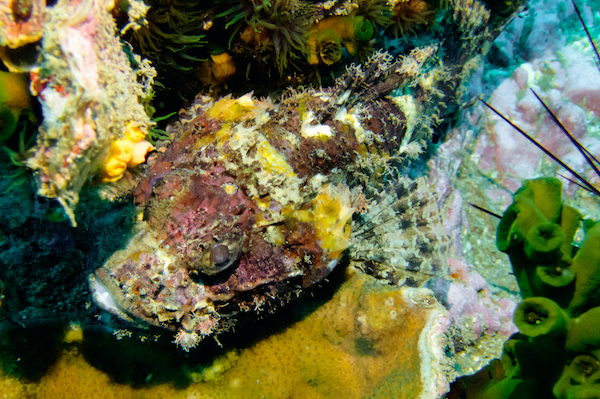
Scorpionfish
The masters of disguise, scorpionfish are hard to spot and are often mistaken for stonefish. The variety we see here is the bearded scorpionfish. Careful not to get too close, as they have very sharp spines!
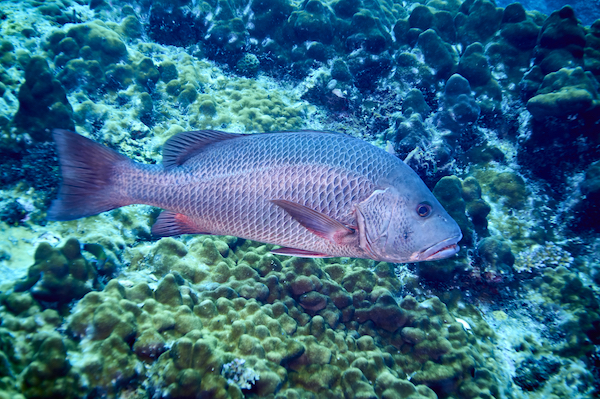
Snapper
You’ll see steamed red and white snapper on the menu at many traditional Thai restaurants. They can be commonly spotted in their natural territory underwater too!
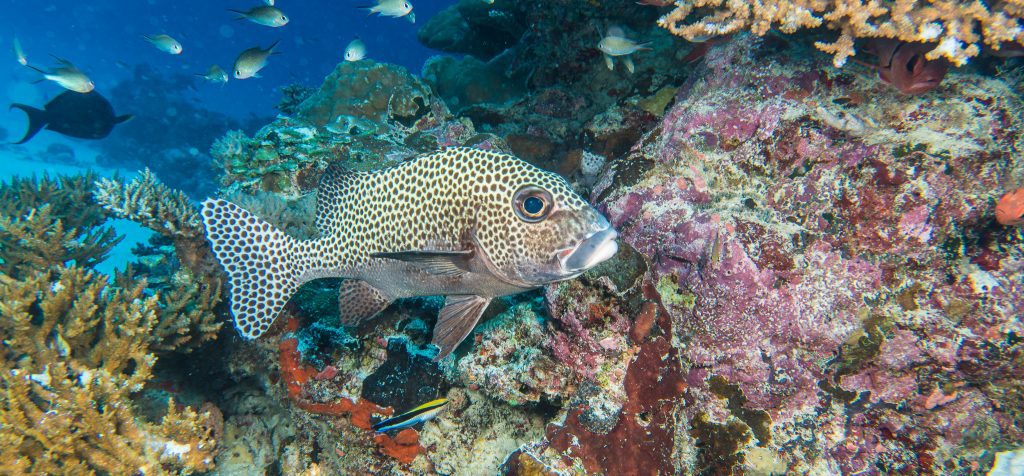
Sweetlips
Harlequin sweetlips are the only species in this group that we see regularly on Koh Tao. Their spotted pattern makes them very distinctive, although there is a huge variation in visual appearance between juveniles and adults!
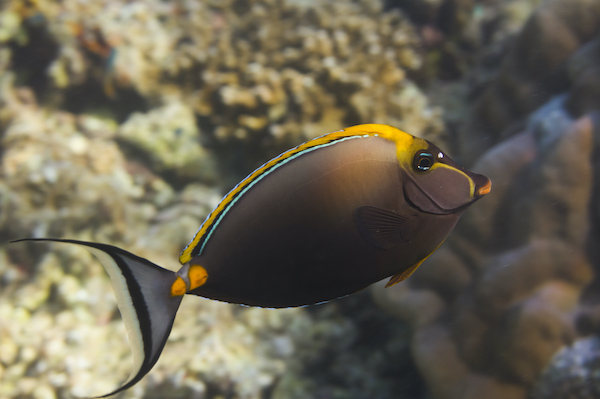
Unicornfish
Easy to identify thanks to the large protruding ‘horn’ that is present in all species, the most commonly seen on Koh Tao is the orange-spined unicornfish.
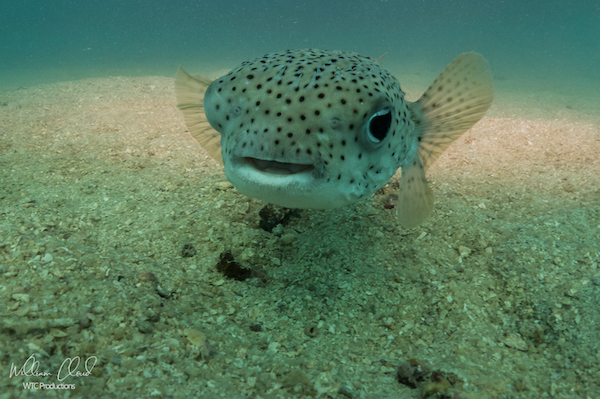
Pufferfish
Blotched porcupine pufferfish are the most common variety seen by divers on Koh Tao but spotted pufferfish and mappa/starry pufferfish can also be found, typically at shallow boulder sites and around artificial reefs. Seal faced pufferfish are also a rarer spot.
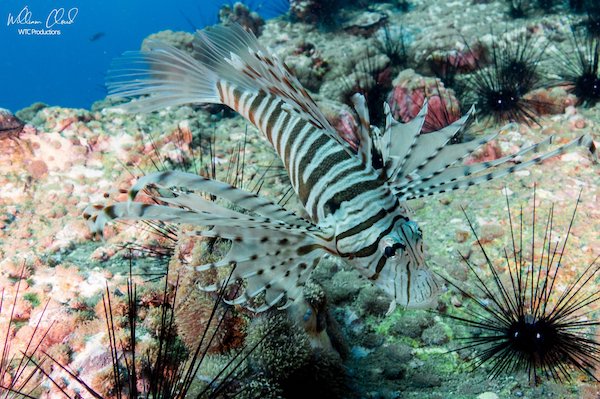
Lionfish
Lionfish sightings are rare, but these deceptively spiny fish with beautiful fanning fins are always a highlight when divers bump into them.
Invertebrates & Reef Critters
Koh Tao marine life is about much more than colourful fish. Look a little closer in the reef, peek under ledges, and shine your torch into cracks and crevices. You might be rewarded with some fabulous invertebrates and reef critters such as:
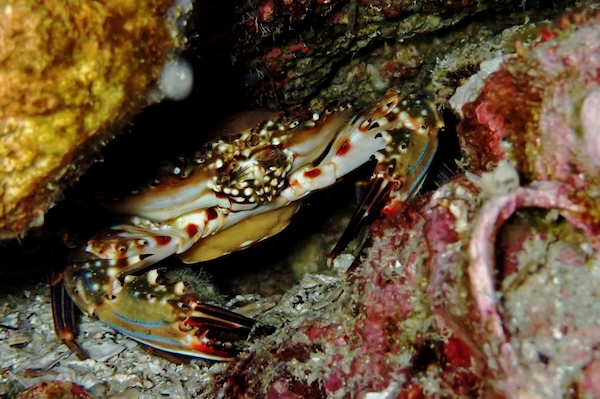
Crabs
From coral crabs and spider crabs hiding in the reef to giant hermit crabs roaming the sands, we have several varieties of crab on Koh Tao. Most are easier to spot on a night dive under torchlight.
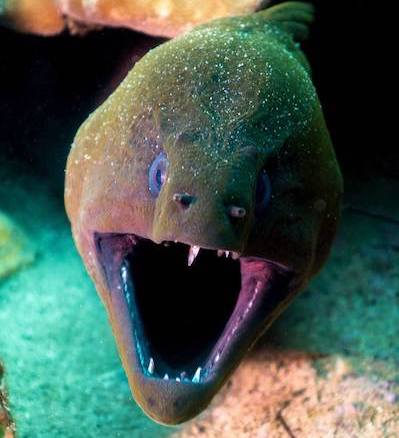
Eels
Look under ledges and into cracks in the reef at most dive sites. You might be rewarded with a white-eyed moray eel. Yellow-edged moray eels can also be spotted from time to time, and if you are really lucky, sometimes even a giant moray eel!
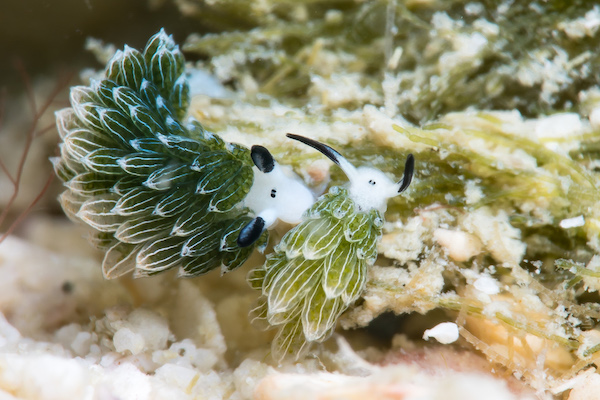
Nudibranchs
Meaning ‘naked lungs’ in Latin, nudibranchs are mostly incredibly small and difficult to spot but are very distinctive due to their bronchi being located outside their main body. Nature is unbelievable sometimes!
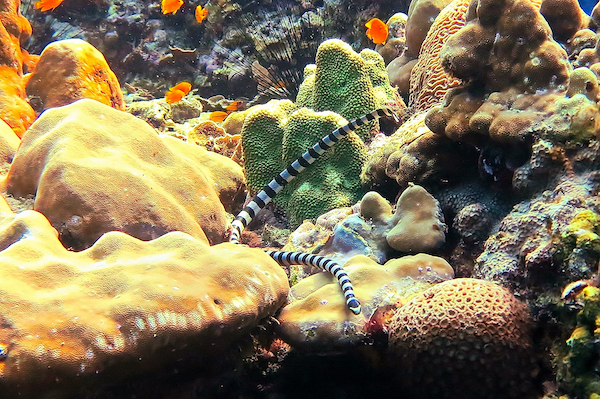
Sea snakes
Banded sea snakes can be seen from time to time on Koh Tao. Although venomous, these black and white striped snakes are usually very shy. They have never been known to cause problems for divers unless they are provoked.
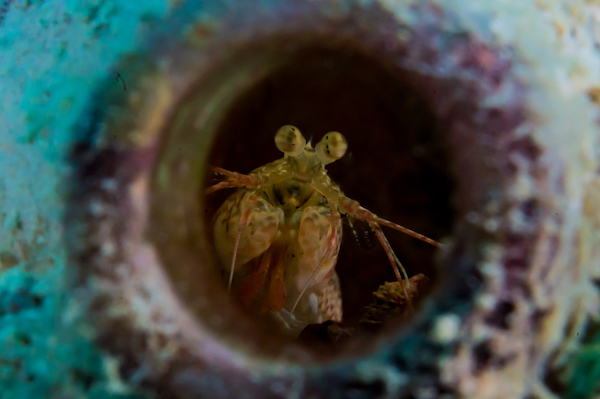
Shrimps
From tiny glass shrimps and cleaner shrimps to Durban dancing shrimp and banded boxer shrimp, if you look close enough in all of the small cracks and crevices as you cruise around underwater, you’re bound to see some on your dives.
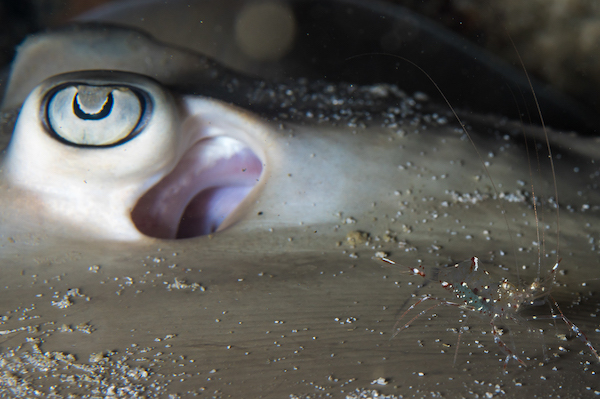
Stingrays
Stingrays are nocturnal so tend to hide under rocky ledges during daytime hours. The blue-spotted ribbontail ray is the most commonly seen around Koh Tao. Although if you get lucky you may spot a Jenkins whip ray occasionally too.
The Big Stuff!
Turtles and sharks are normally at the top of every diver’s wish list when signing up for diving on Koh Tao. Both inhabit Koh Tao waters, but as the reef system that makes up their territory is so extensive and stretches all around the island and beyond, it really just comes down to luck and being in the right place at the right time. So be sure to wear your lucky underwear for your Koh Tao scuba diving trips!
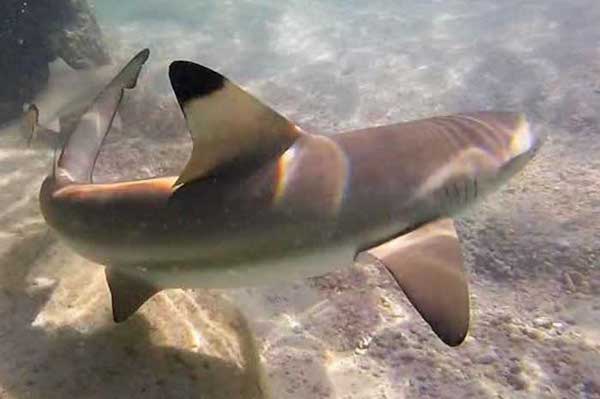
Sharks
Sharks are beautiful creatures and are infinitely more scared of divers than we are of them. If you are nervous about getting in the water in case you see one – don’t be! A cool thing about sharks on Koh Tao is that you don’t need to go scuba diving to see them. Blacktip reef sharks can be spotted at many shallow beaches and bays while snorkeling. For your best chances at finding them, check out Aow Leuk Bay, Hin Wong Bay, and of course, Shark Bay!
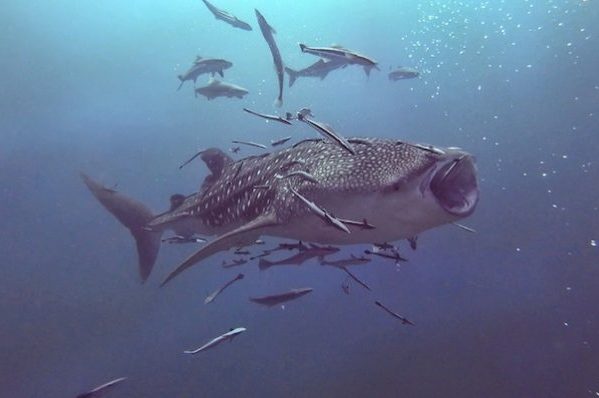
Whale Sharks
In addition to blacktip reef sharks, we are lucky to be in a location that is graced with the presence of whale sharks from time to time Generally at the deeper and more advanced dive sites. Whale sharks are the biggest fish in the sea. Getting to dive with one is a truly spectacular experience. They are more prevalent at some times of the year than others. Although there is no real guaranteed ‘whale shark season’.
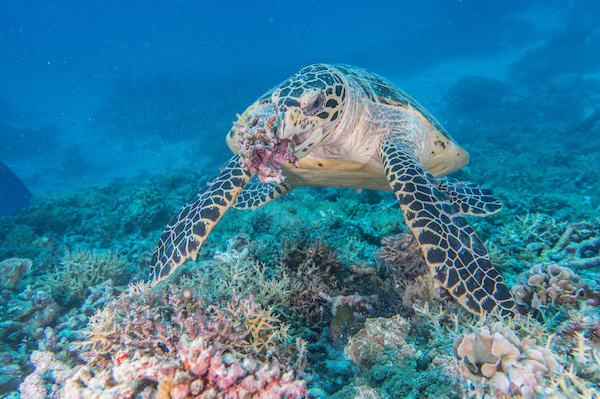
Turtles
Koh Tao means ‘Turtle Island’ in Thai, so it stands to good reason that you can expect to see some during your stay. If you snorkel at Shark Bay, June Juea Beach, or Sai Daeng Bay you have a good chance of spotting one. They can also be seen on scuba dives as they regularly pass through many of our beginner dive sites and intermediate dive sites.
We would like to thank Billy Cloud and Petcharat Nuchcy Korbuakesorn for the use of their media, kap kun krab.
